Resources
L-Dex® Analysis for Lymphedema
Offer your patients peace of mind. Know their L‑Dex score with the leading technology for point-of-care lymphedema assessment.
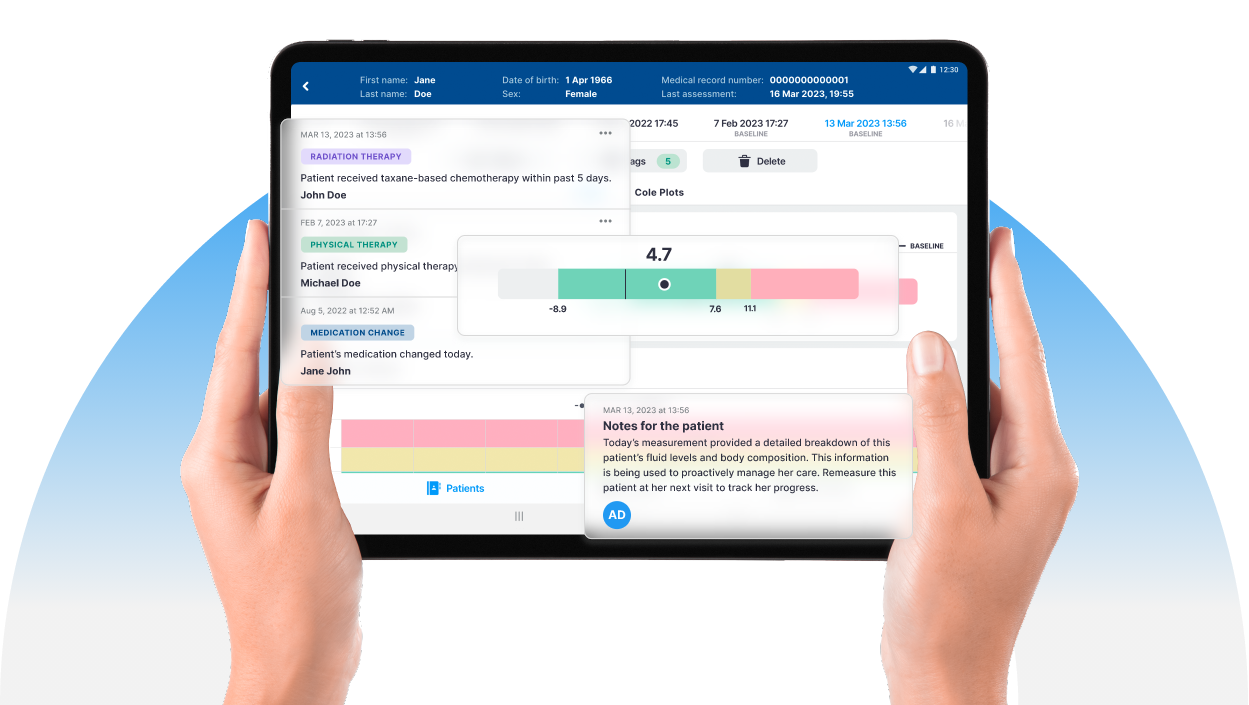
GET THE WHITEPAPER
Why Expanding Access to a Lymphedema Prevention Program is Needed for Cancer Patients
91% of patients believe cancer care teams should offer patients a Lymphedema Prevention Program
L-Dex Analytics
- Optimize workflows and patient outcomes
- Track utilization of L-Dex on your SOZO devices
- Understand your L-Dex patient population
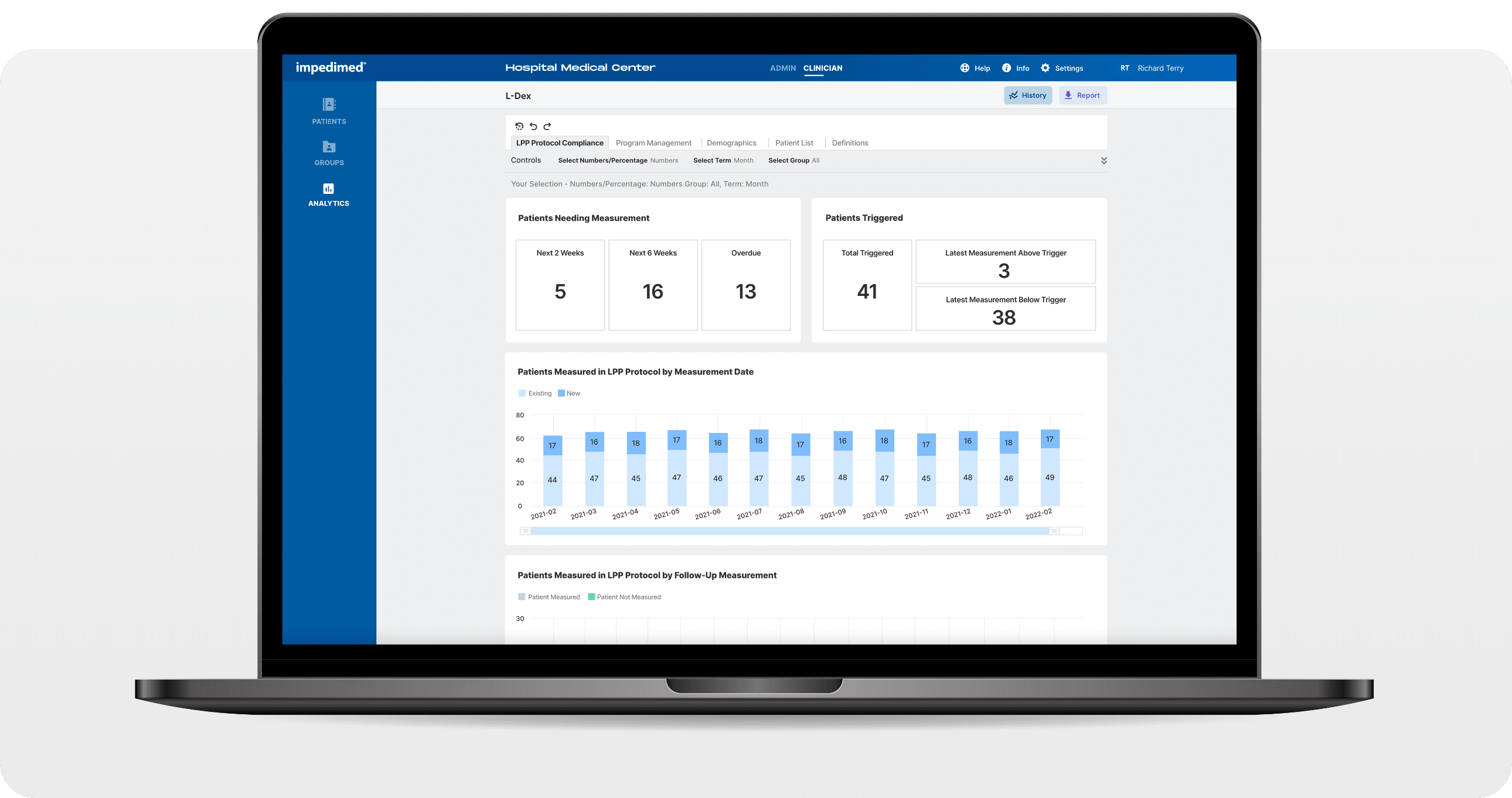
Designed for Lymphedema
- The L‑Dex score, only available from ImpediMed, is designed to detect small lymphedema-related fluid changes in the limbs.
- L‑Dex compares the fluid in a limb at-risk for lymphedema to a healthy limb in order to help detect lymphedema.
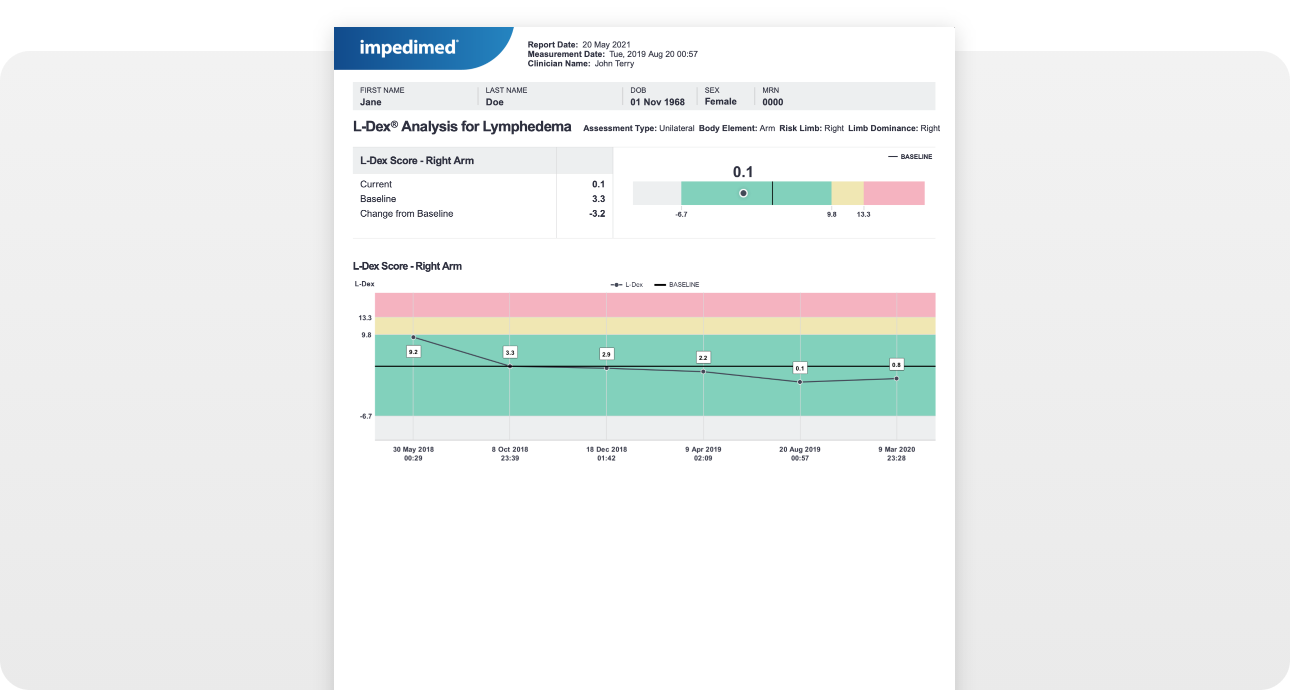
Accurate Detection
- L‑Dex is validated to detect lymphedema at its earliest, subclinical stage
- Detects fluid changes as small as 36 ml (2.4 tablespoons)1
- Validated against lymphoscintigraphy2
- 80% Sensitive and 90% Specific in detecting subclinical lymphedema following cancer surgery with a 6.5 change from a pre-treatment baseline3
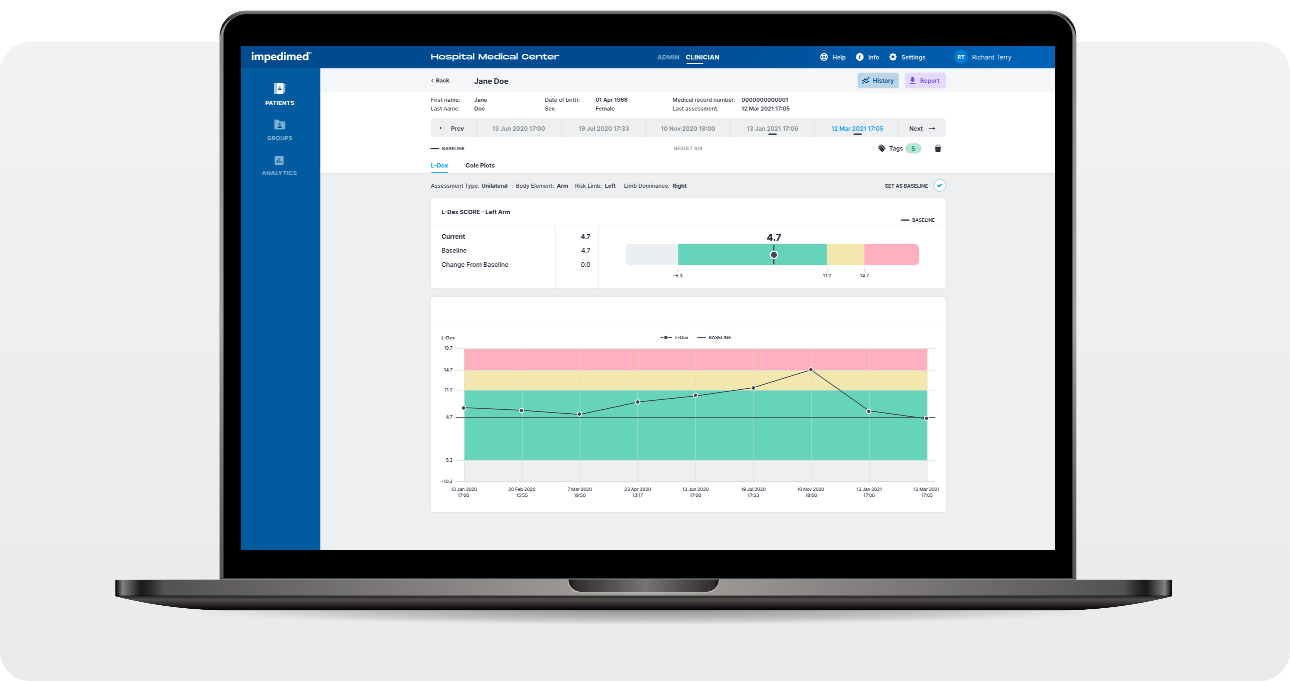
Demonstrated Outcomes
- 92% of patients with early detection using L-Dex and intervention did not progress to chronic lymphedema4
- Significantly lower progression to chronic lymphedema with early detection using L-Dex and intervention versus using tape measure4
- L-Dex more precise and reliable than tape measure4
See the Latest Clinical Evidence
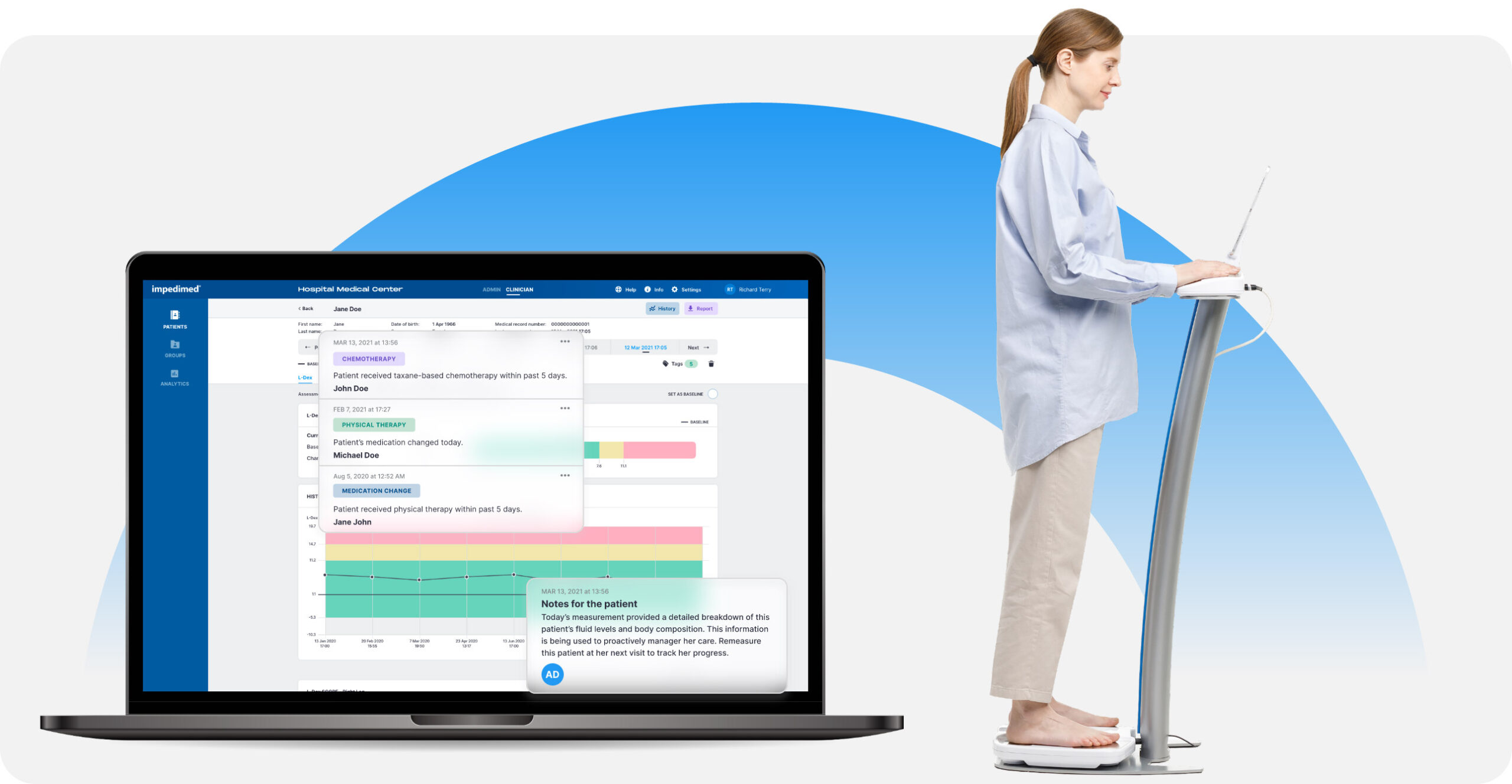
Extensive Experience
- 22 of the 33 members of the National Comprehensive Cancer Network® (NCCN®) use SOZO with L-Dex
- BIS is recommended in lymphedema clinical practice guidelines from the American Physical Therapy Association5, eviCore Healthcare6, and the National Lymphedema Network7
- Major institutions including University of Kansas, University of Pittsburgh Medical Center, Memorial Sloan Kettering, and MD Anderson have published their experience using L-Dex8-12
SOZO Digital Health Platform
SOZO uses ImpediMed’s BIS technology to measure and track critical information about the human body to aid clinicians in managing chronic disease and maximizing patient health. SOZO is non-invasive, fast, and easy to use. Results from the 30-second test are available immediately providing proactive patient care including early detection of disease progression, treatment monitoring, and patient education.
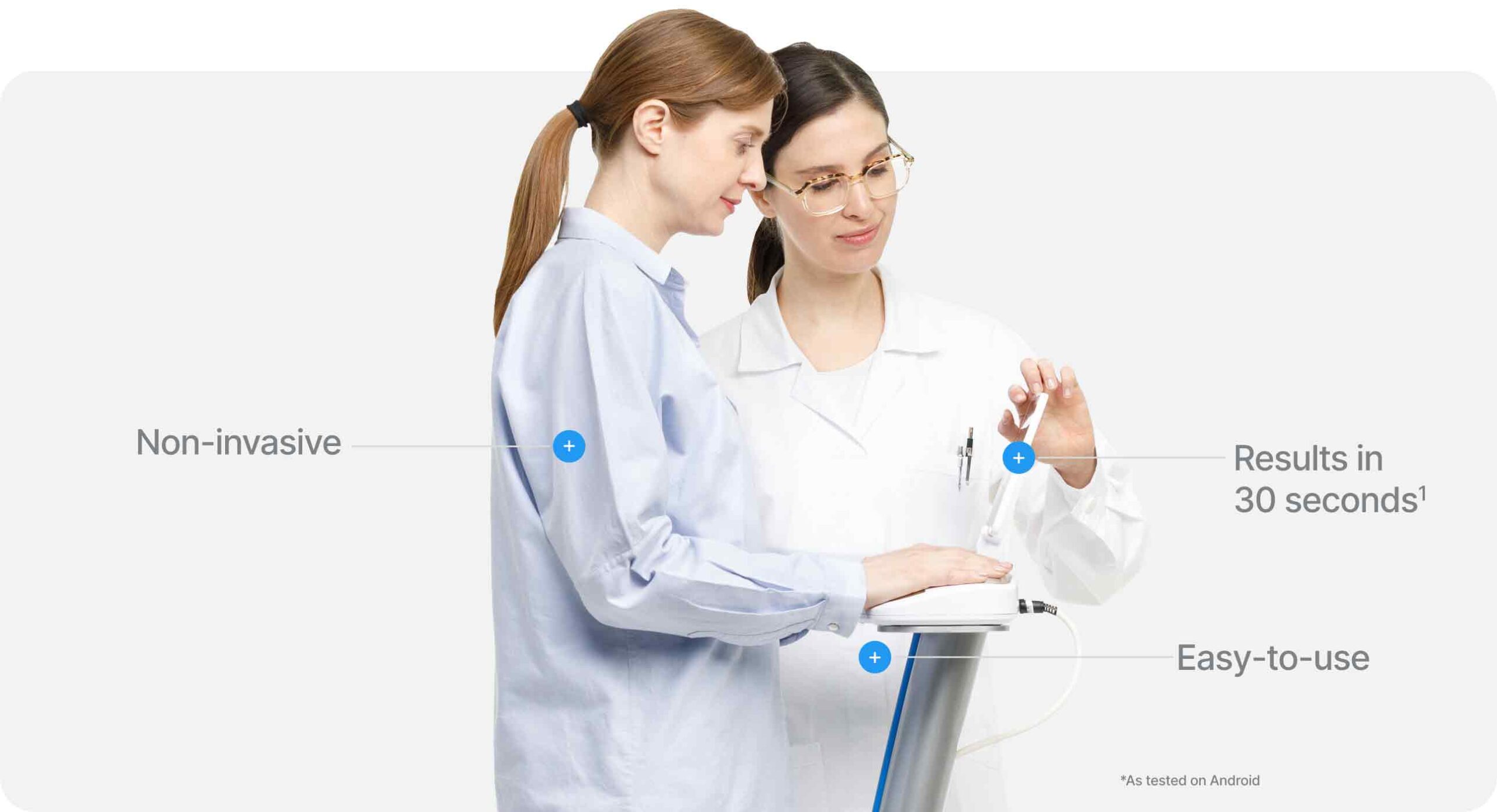
References
- Ward, L. Is BIS ready for prime time as the gold standard measure. Jrn Lymphoedema 2009;4(2).
- Dylke ES, et al. Diagnosis of upper limb lymphedema: development of an evidence-based approach. Acta Oncologica 2016;55(12):1477-83.
- Fu MR, et al. L-Dex ratio in detecting breast cancer-related lymphedema: reliability, sensitivity, and specificity. Lymphology 2013;46:85-96.
- Ridner SH, et al. A Comparison of Bioimpedance Spectroscopy or Tape Measure Triggered Compression Intervention in Chronic Breast Cancer Lymphedema Prevention. Lymphatic Research and Biology 2022.
- Shah C, et al. The impact of monitoring techniques on progression to chronic breast cancer‑related lymphedema: a meta‑analysis comparing bioimpedance spectroscopy versus circumferential measurements. Breast Cancer Research and Treatment 2020; https://doi.org/10.1007/
s10549-020-05988-6. - Levenhagen K, et al. Diagnosis of Upper Quadrant Lymphedema Secondary to Cancer: Clinical Practice Guideline From the Oncology Section of the American Physical Therapy Association. Physical Therapy 2017;97(7):729-45.
- Clinical guidelines for medical necessity review of physical and occupational therapy services. Version 1.0.2019. eviCore Healthcare.
- Position statement of the National Lymphedema Network: the diagnosis and treatment of lymphedema. NLN Medical Advisory Committee; February 2011.
- Kilgore L, at al. Reducing breast cancer-related lymphedema (BCRL) through prospective surveillance monitoring using bioimpedance spectroscopy (BIS) and patient direction self-interventions. Ann Surg Oncol 2018;http://doi.org/10.1245/
s10434-018-6601-8. - Soran A, et al. The importance of detection of subclinical lymphedema for the prevention of breast cancer-related clinical lymphedema after axillary lymph node dissection; a prospective observational study. Lymph Res Bio 2014;12(4):289-94.
- Wiser I, et al. Preoperative assessment of upper extremity secondary lymphedema. Cancers 2020;12(135):doi:10.3390/
cancers12010135. - Coroneos CJ, et al. Correlation of L-Dex Bioimpedance Spectroscopy with Limb Volume and Lymphatic Function in Lymphedema. Lymph Res & Bio 2018;doi:10.1089/lrb.2018.
0028.